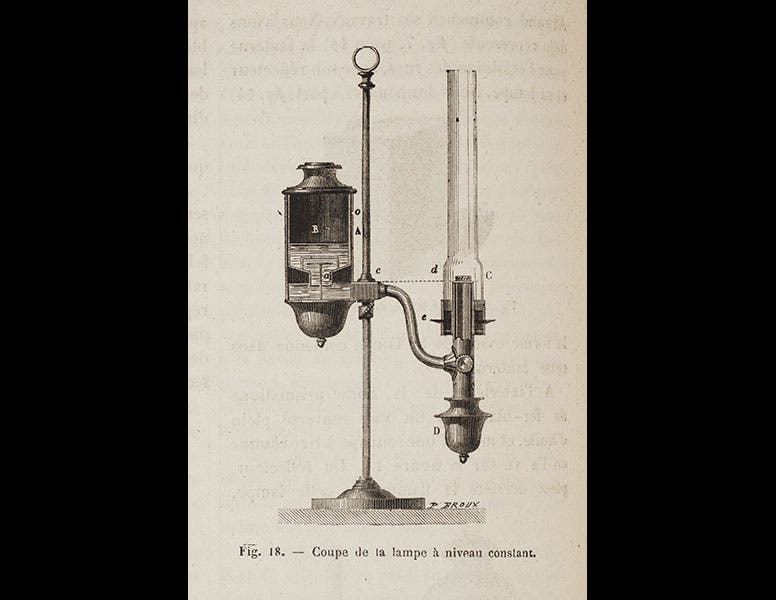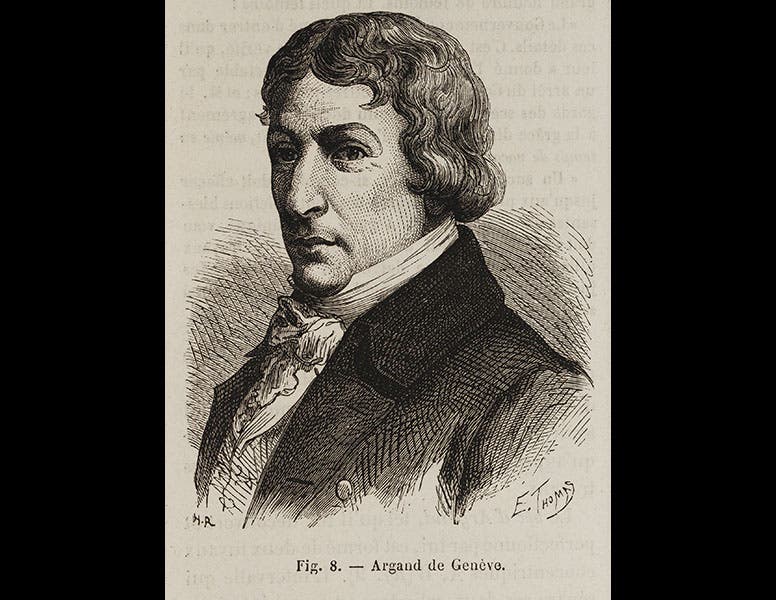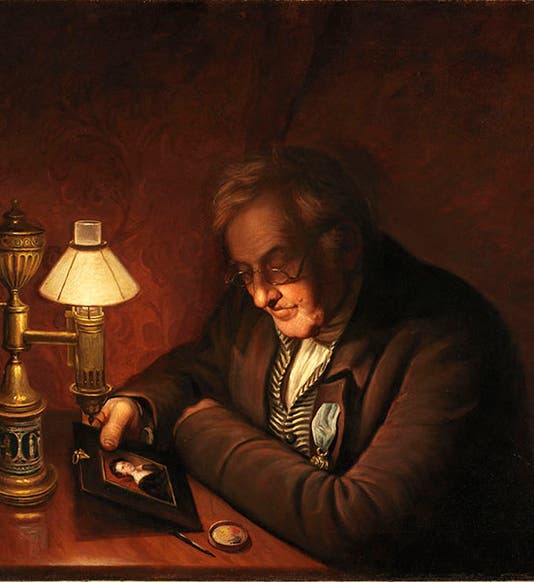Scientist of the Day - Ami Argand

Linda Hall Library

Linda Hall Library

Linda Hall Library

Linda Hall Library
François Pierre Ami Argand, a Swiss chemist, was born July 5, 1750. Argand must be the most influential inventor whom no one knows. In 1784, he invented a new kind of oil lamp. Oil lamps before Argand were smoky and produced less light than a candle. Candles, however, were expensive, affordable only by the wealthy. The Argand lamp used a cylindrical cloth wick inside a close-fitting glass chimney, so that air flowed up both inside and outside the wick. It required a thick oil for fuel, such as whale oil or rapeseed oil, which had to be gravity-fed from a container higher than the wick. But the bright side was apparent to all: the Argand lamp produced a brilliant and smokeless light, as bright as 7 or 8 candles. Argand was troubled by patent theft in France, but he arranged to have his Argand lamp produced in England by no less than James Watt and Matthew Boulton, who had been successfully manufacturing steam engines.
The Argand lamp was an immediate world-wide success; Thomas Jefferson, for example, ordered a number for Monticello, as did many other Americans, and soon everyone had Argand lamps (or the French knock-offs) in their parlors, dens, and libraries. The Argand lamp ruled the light waves for seventy years (and provided much of the impetus for the whale-fishing industry of Melville’s day). Around 1850, the kerosene lamp was introduced – with its much cheaper fuel – and the Argand lamp faded from use. But the kerosene lamp, right up to this day, utilizes many of the same combustion innovations that made the Argand lamp so successful.
Argand himself, as too often happens, was not as successful as his lamps. In addition to his patent problems back home, he lost everything in the French revolution, and he died in 1803 without realizing the lighting revolution he had wrought. There is a portrait by Charles Willson Peale in the Detroit Institute of Arts that shows his younger brother, James Peale, admiring a miniature portrait by the light of an Argand lamp (first image).
The wood engravings above show the details of an Argand lamp, as depicted in Louis Figuier’s Les merveilles de la science (1867): the wick (second image); the chimney (third image), and a cutaway view of the oil reservoir and lamp (fourth image). Figuier also included a portrait of Argand (fifth image); how reliable it is, we cannot say.
Dr. William B. Ashworth, Jr., Consultant for the History of Science, Linda Hall Library and Associate Professor, Department of History, University of Missouri-Kansas City. Comments or corrections are welcome; please direct to ashworthw@umkc.edu.






![Columbine, hand-colored woodcut, [Gart der Gesundheit], printed by Peter Schoeffer, Mainz, chap. 162, 1485 (Linda Hall Library)](https://assets-us-01.kc-usercontent.com:443/9dd25524-761a-000d-d79f-86a5086d4774/3829b99e-a030-4a36-8bdd-27295454c30c/gart1.jpg?w=210&h=210&auto=format&fit=crop)
